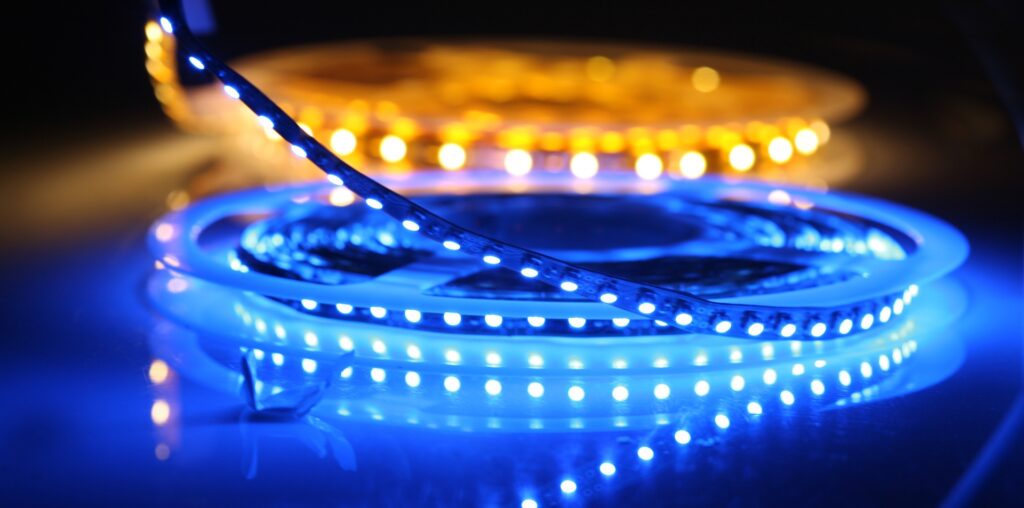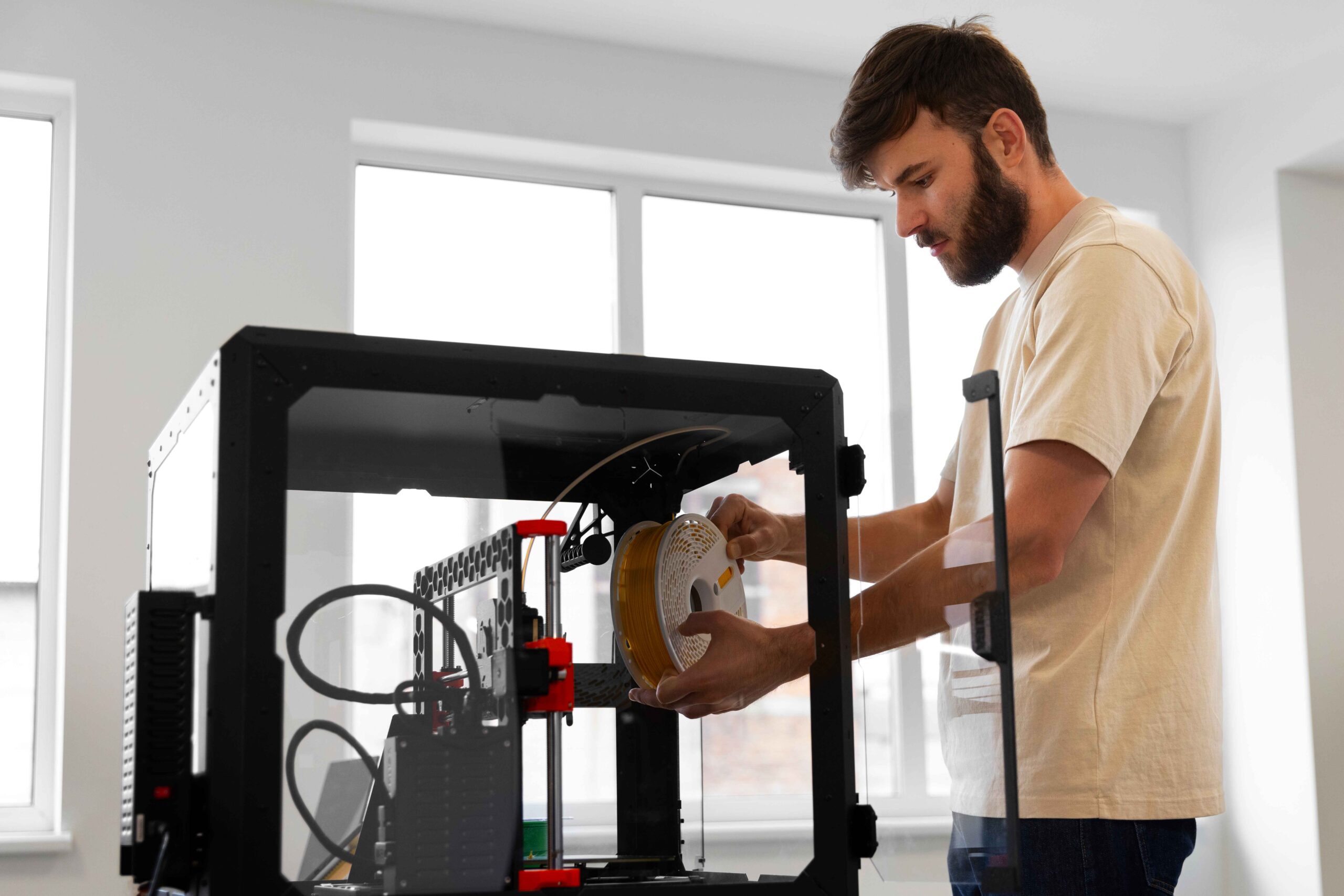LED and neon lights are great for lighting storefronts, creating eye-catching displays, or adding style to indoor spaces. I’ve spent much time learning about the differences between these two popular lighting types, and I’m often surprised by how many wrong ideas people have.
Traditional neon signs have that familiar, nostalgic glow, but LED neon signs have greatly changed in recent years. Having helped clients choose between them many times, it’s important to understand these differences before spending money.
In this article, we’ll examine the 10 main differences between LED and neon lights to help you choose the best option for your business or home.
1. Technology and Components
Traditional neon signs use an older but interesting method. They are made from heated glass tubes, bent by hand, and filled with gases like neon or argon. When electricity passes through the tubes, the gas lights up, creating the classic glow we recognize.
In contrast, LED neon signs use different parts. These modern signs have light-emitting diodes (LEDs) inside plastic tubes made of acrylic or PVC instead of glass. They create a similar look using LED technology instead of glowing gas. Many people can’t tell the difference from far away!
LED signs run on much lower voltage (about 12V) than traditional neon signs, making them safer to install and maintain. This difference also affects brightness and energy use.
2. Brightness and Visibility
If you’re wondering which lights are easier to see, LED lights are the clear winner. They give off more light and focus it better, making LED signs much brighter and easier to spot from far away.
This difference is even clearer in bright conditions. I once put up both types of signs at a store, and in daylight, the LED sign was easy to see while the traditional neon looked faded. LEDs shine at about 218 lumens, around 6% brighter than traditional neon’s 197 lumens.
Because LED light is more focused, these signs work better in places with lots of background light, like busy city streets or bright shopping malls. Traditional neon lights have a softer glow that can blend into other lights, but LEDs stand out more clearly.
3. Energy Efficiency
A big difference for budget-minded business owners is energy use. LED neon signs are much more efficient, using about 80% less power than traditional neon signs.
To compare, traditional neon signs usually use between 400 and 610 watts, depending on the type of glass. LED neon signs use less than 65 watts—similar to a regular household light bulb. This means lower electricity bills and less impact on the environment.
This energy saving is why many businesses are switching to LED, even if they liked the classic look of traditional neon. When a sign runs all the time, saving 80% on energy adds up over months and years.
4. Maintenance Needs
Taking care of traditional neon signs can be tough. The glass tubes are fragile and can break easily, especially in busy places or areas with vibrations. Fixing them usually requires special skills that not many technicians have, making repairs hard and costly.
On the other hand, LED neon signs need very little care. Made from strong acrylic or PVC, they are much more damage-resistant. I’ve seen LED signs handle accidental bumps that would have immediately broken traditional glass neon. Most LED signs need occasional dusting to look good.
Also, traditional neon signs can start buzzing as they get older, which can be annoying in quiet places. LED signs often work quietly, though specific dimmers sometimes cause a slight humming noise.
5. Cost Considerations
Another big difference is the upfront cost and ongoing expenses. Custom neon signs with traditional methods usually cost 2-3 times more than LED signs. This is because making neon signs requires special skills like bending glass and filling gas, which only a few experts can do today.
Besides the buying price, LED signs save more money over time. They use much less energy, which lowers monthly bills. They also need less maintenance and last longer, so you spend less on repairs or replacements.
For new businesses with limited budgets, this cost difference is often important. I’ve worked with several new restaurant owners who liked the look of traditional neon but chose LED signs after seeing how much cheaper they are.
6. Aesthetic Appeal
Both types have visual strengths, and which looks better depends on personal taste. Traditional neon lights give off a warm, unique glow with a genuine feel that many people love. The slight imperfections in the hand-shaped glass add a nostalgic, retro charm that some businesses want.
LED neon signs closely copy the traditional look but have a slightly different effect. Their light is evener and sharper, which suits modern styles. What makes LED signs popular is their flexibility—they can change colors, dim, or create effects like flashing, which traditional neon can’t do.
Businesses usually pick based on their brand style:
- Vintage-style bars and retro diners often choose traditional neon for its authentic feel.
- Modern businesses prefer LED signs for their clean look and customization options.
7. Safety Considerations
LED neon signs are safer than traditional neon signs in several ways.
Traditional Neon Signs: Safety Risks
- Contains Mercury: Traditional neon signs have mercury, which is toxic and harmful to people and the environment if improperly disposed of.
- Breakage Danger: If broken, these signs can shatter into sharp pieces that can hurt people nearby.
- High Voltage: They use high-voltage electricity, which can be dangerous with electrical problems.
- Heat Production: Traditional neon signs get very hot and could cause fires in some places.
LED Neon Signs: Safer Features
LED signs offer many safety advantages:
- Low Voltage: They use low voltage, making electrical hazards less likely.
- Little Heat: LED signs stay cool even after running for days, reducing fire risk.
- No Toxic Gases: They don’t contain harmful gases, so they’re better for the environment and safe to use indoors.
- Shockproof: LED signs are usually safe to touch and don’t give electric shocks, making them suitable for areas with kids.
For example, a coffee shop wanted a sign behind its counter where staff often move around. LED was the clear safety choice because it lowered fire risks and avoided dangers from broken glass, giving peace of mind that traditional neon couldn’t provide.
8. Environmental Impact
More businesses are considering how their choices affect the environment, and lighting is no different. LED lights are better for the environment because they use much less energy, which lowers carbon emissions over time.
LED signs also don’t contain harmful gases like traditional neon signs, which use argon, neon, and sometimes mercury—these need special handling when thrown away. LEDs last longer, so they must be replaced less often, creating less waste.
Making LED signs usually uses fewer resources. While traditional neon signs might be seen as more handcrafted and less mass-produced, the overall environmental benefits of LEDs are much greater in the long run.
9. Customization Options
Both types of lighting can be customized, but LED neon signs offer much more flexibility in design and features. They can have more detailed and complex shapes, and many can change colors or show moving light effects.
Traditional neon has fewer color choices because it depends on the gases inside the tubes. While it looks nice, it can’t match the wide range of colors LED lights can produce. LEDs are better for businesses that want exact brand colors or signs that change colors.
For example, I worked with a nightclub that wanted its logo to change colors with the music—something only LED lights can do. Traditional neon can’t offer this kind of interactive, programmable feature.
10. Longevity and Durability
The last key difference is how long each type lasts under regular use. LED neon signs usually last much longer, often over 50,000 hours. They are also more resistant to impact damage, temperature changes, and moving around.
Traditional neon signs are fragile but can last long if handled carefully. However, their glass tubes can break from sudden temperature shifts, bumps, or strong vibrations. Because of this, businesses often need to replace traditional signs after a few years while similar LED signs keep working well.
This durability difference matters for outdoor signs exposed to weather or businesses near busy roads or subway lines where vibrations happen. The strength of LED signs often makes them the better choice for harsh conditions.
For most businesses today, choosing between traditional and LED neon balances looks with practical factors like energy use, upkeep, and cost.
While some still love the classic glow of traditional neon lights, the clear benefits of LED neon signs explain why they are becoming more popular in business settings. Either way, both types add bright, attractive lighting that helps spaces stand out.




